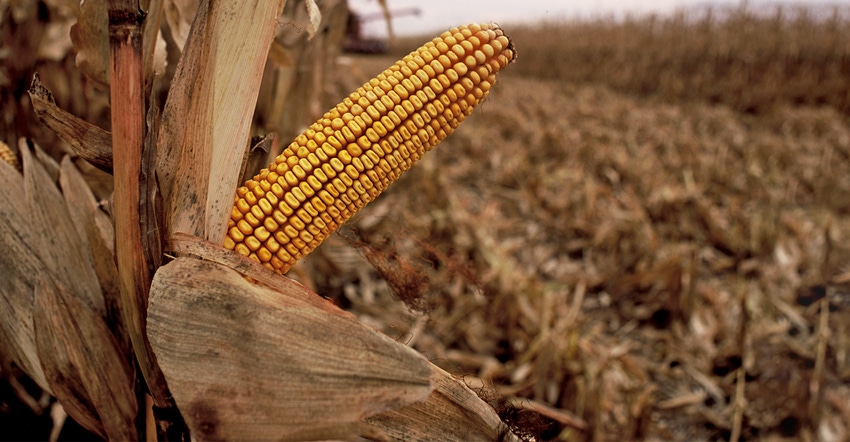October 12, 2018

If you hope to make sense of all the numbers you’ll see in corn yield trial reports this winter, brush up on these areas:
LSD, CV numbers
The yield of a hybrid is important, but the least significant difference statistic is key to understanding which hybrids are statistically — not randomly — different from each other. If a trial has an LSD value of 19.1 bushels per acre, then all hybrids within 19.1 bushels per acre of each other are considered to be similar. In other words, a hybrid with a yield of 248 bushels per acre is not significantly different from any hybrids with yields greater than 228.9 bushels per acre.
Another important statistic is the coefficient of variation. The CV is an indicator of the repeatability and reliability of the measurements. The lower the CV the better. A CV value of 6% is excellent, for example.
Maturity compared
Different classification systems are used to characterize corn maturity ratings. One of the most widely is the number of growing-degree days to reach maturity. GDD can also be reported as growing-degree units.
The second approach is the comparative relative maturity. CRM assigns ranks to hybrids according to “days” of maturity. These ranks are related to the accumulated GDDs. When considering CRM it is important to remember that selecting a 90-day corn does not mean it will mature in 90 days. Two hybrids may reach physiological maturity at the same time but dry down at different rates, thus having identical GDD hybrid ratings but different CRM ratings. The two systems are related, and generally:
• An 85-90 day hybrid requires 2,000-2,100 GDD.
• A 90-95 day hybrid requires 2,100-2,250 GDD.
• A 95-100 day hybrid requires 2,250-2,350 GDD.
• A 100-105 day hybrid requires 2,350-2,500 GDD.
• A 105-110 day hybrid requires 2,500-2,650 GDD.
As a rule of thumb, selected hybrids should reach maturity (black layer) at least 10 days before the first average killing frost (32 degrees F). Keep in mind that production systems may affect maturity selection. For example, in cooler spring soil temperatures, no-till systems with heavy residue may slow plant maturity.
Some growers will also look closely at the silk CRM (GDUs to silking) of individual hybrids. Earlier-silking hybrids have been known to work well in hot, dry environments because they may enter the reproductive growth stages prior to severe drought and heat stress.
GM hybrids
Consider technology costs, the marketability of the crop, and the risk of developing weed or insect pest resistance when selecting a genetically modified hybrids. The starting point to obtain information about GM seed corn traits is from seed suppliers. Be sure you:
• Understand the terminology. For example: GT means glyphosate tolerant, LL means LibertyLink tolerant and RR2 means Roundup Ready 2 Yield.
• Understand the trait biology.
• Check seed bag tags to make sure what was ordered was delivered.
• Check herbicide traits multiple times prior to herbicide application.
• Save seed bag labels for your field records.
More tips
For more information, read "Corn Best Management Practices" published by the South Dakota State University Extension Service.
You May Also Like




